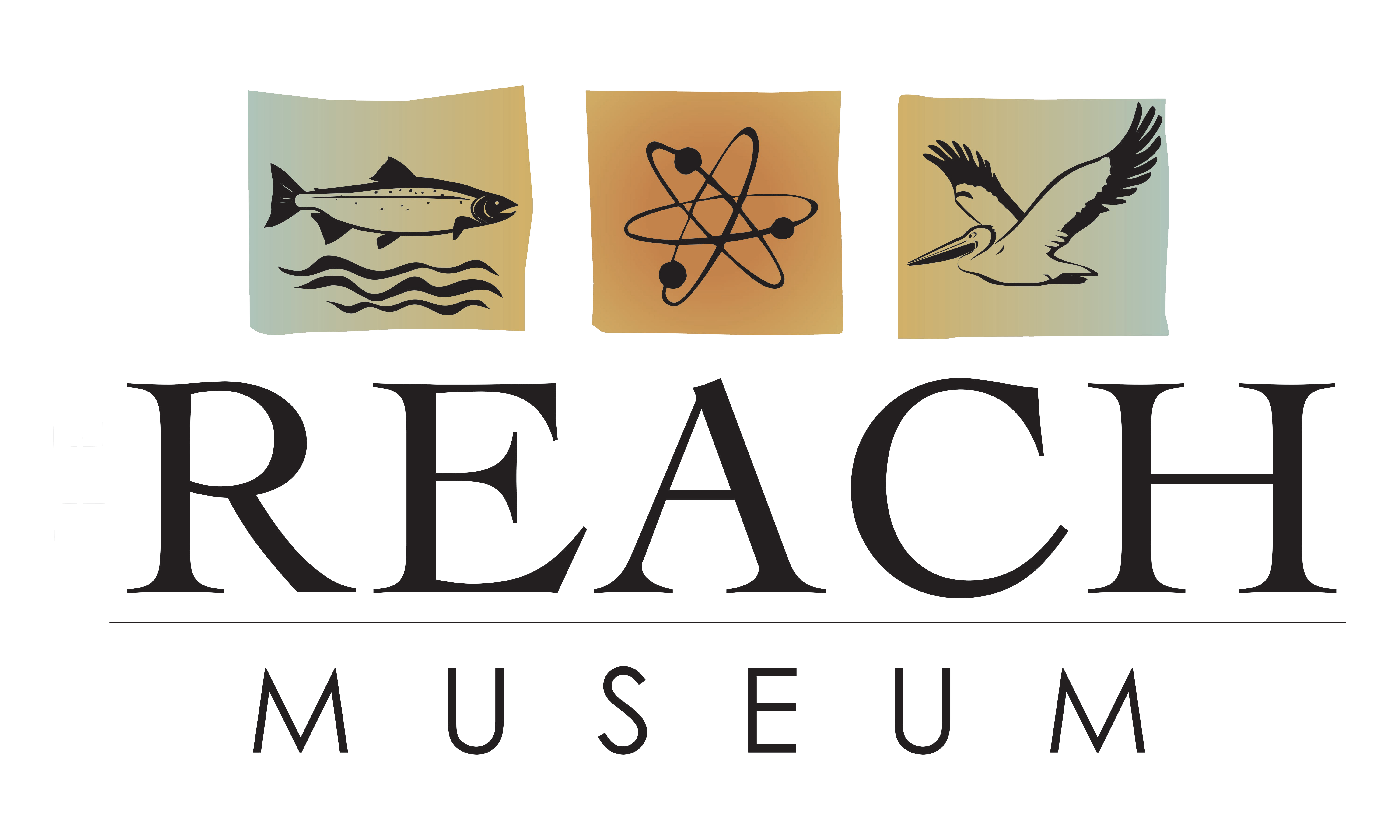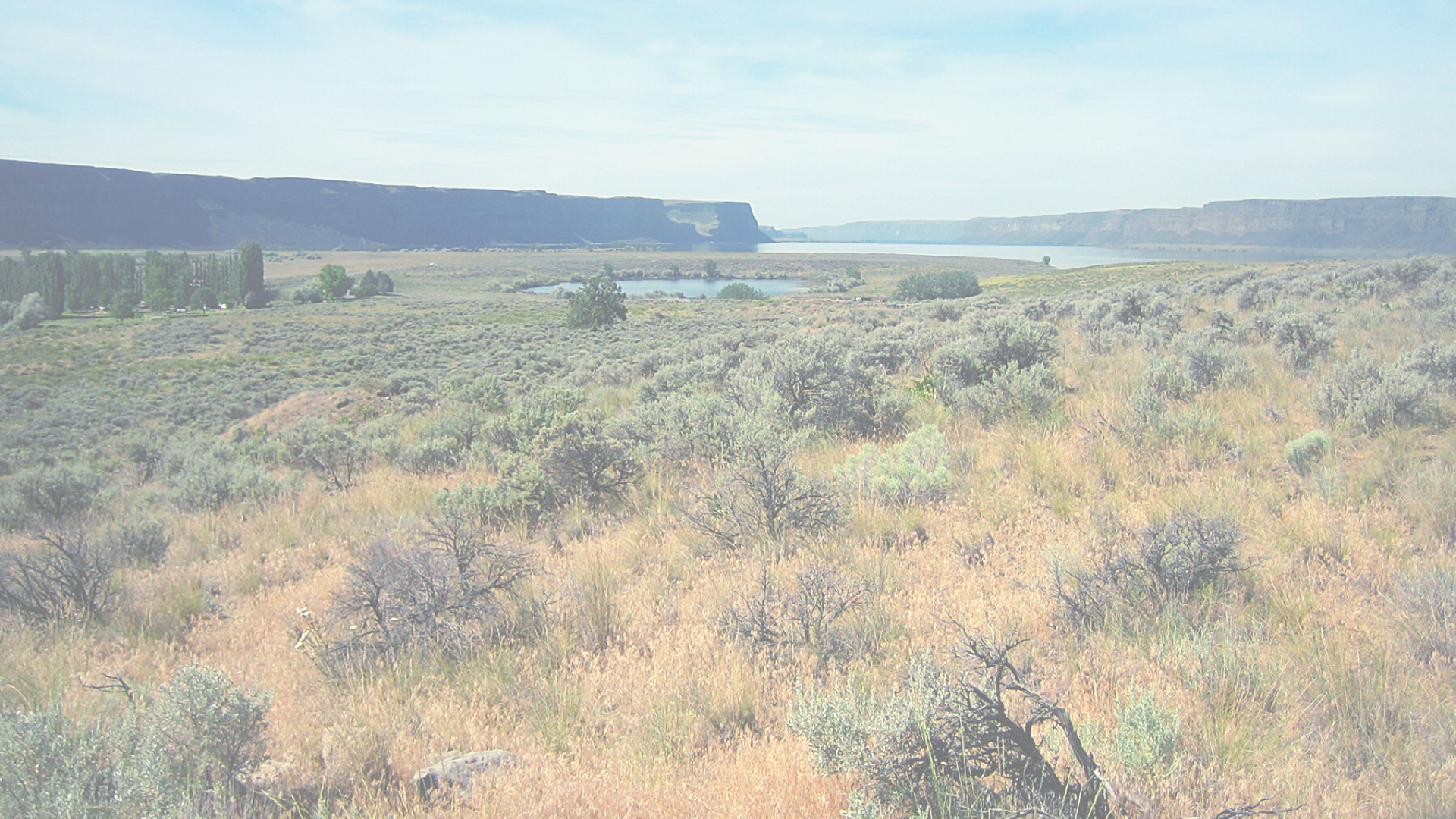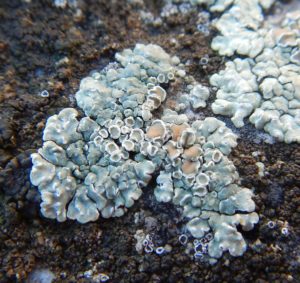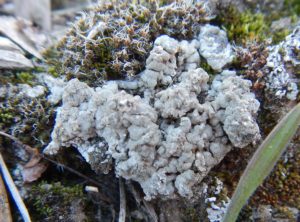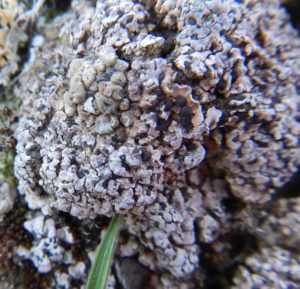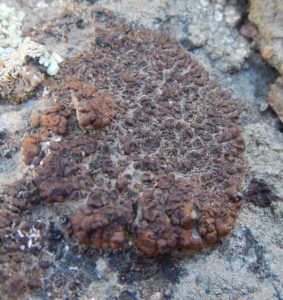There are some things in the world that require a close examination for proper appreciation. Really close. Like “lie down on your belly on the ground” close. That’s the case with biological soil crust (BSC), the living system of fungi, mosses, algae, and cyanobacteria that covers the ground in the shrub-steppe. When you look out over the natural vegetation of the Hanford Reach, you’ll sagebrush and other shrubs, bunches of tall grasses, and (in places that haven’t been disturbed) a crust on the ground that varies from gray to green to even orange in some spots.
This colorful stuff is easy to dismiss as just pretty, but BSC has some super important functions. It holds the soil in place when that strong wind blows the tumbleweeds. It helps the little rainfall we get to soak into the ground instead of running off. It takes elements from the air such as nitrogen and puts it into the soil so the surrounding plants can use it. And when you get down on the ground to check it out, you can see it makes a cozy little habitat for the tiniest critters in the food web.
In places that have been disturbed by lots of human and animal foot traffic, or vehicles, we notice that the crust is in small pieces or missing altogether. This makes room for the dreaded cheatgrass or other invasive weeds to move in. (Read this article about why these weeds do not make good habitat.) There are likely other effects we don’t yet understand.
One of the most impressive living things in BSC is star moss, Tortula ruralis. This little moss looks brown and dead in dry weather, but spray a little water on it and it immediately springs to life, green and perky with tiny stars.
Also, fun to look at with a magnifier is the lichens, each one made of a fungus and an alga living together in a mutualistic relationship. The fungus gets the benefit of energy from the alga (which turns sunlight into food) and the alga gets structure and protection from the fungus. They look like delicate gray flower petals, sometimes overlapping like fish scales. The pale green and orange lichen pictured here is Lecanora muralis, which you might also see growing on rocks or wood.
When you’re visiting The REACH garden, stop for a look at the BSC garden bed, off by itself away from the sprinklers. It’s a raised bed, so you don’t have to get down on your belly, but bring your eyes close to the amazing, tiny organisms that make up the soil crust.
